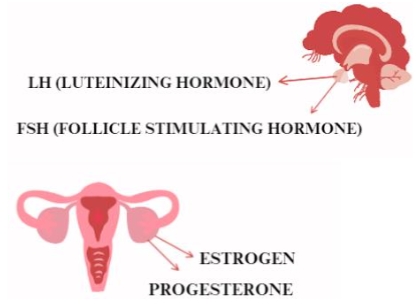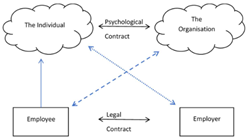Prevalence of working adult Attention-Deficit/Hyperactivity Disorder impairment during the COVID-19 pandemic: Implications for the future
Abstract
In this study; we analyzed the relationship between U.S. workers’ reported levels of ADHD symptomatology and the impact of pandemic conditions on symptomatic impairment and the estimated prevalence of Adult ADHD. We compared data from the Adult ADHD Self-Report Scale Screener (ASRS) collected during the pandemic with data from two pre-pandemic studies. Our findings indicate that during the pandemic; mean impairment scores on all six ASRS items increased; leading to a predicted rise in the Adult ADHD diagnosis rate to 9.26%; compared to the pre-pandemic estimate of 4.4%. These results suggest that more adults experienced significant ADHD-related challenges during the pandemic. As organizations continue to implement remote work and other pandemic-related changes; it is important to consider the unique difficulties that neurodiverse workers; particularly those with ADHD; may face in adapting to these new work environments.
References
Antshel, K. M. (2018). Attention deficit/hyperactivity disorder (ADHD) and entrepreneurship. Academy of Management Perspectives, 32(2), 243–265. https://doi.org/10.5465/amp.2016.0144
Asherson, P., Buitelaar, J., Faraone, S. V., & Rohde, L. A. (2016). Adult attention-deficit hyperactivity disorder: Key conceptual issues. The Lancet Psychiatry, 3(6), 568-578. https://doi.org/10.1016/S2215-0366(16)30032-3
Barkley, R. A. (2014). Attention-deficit hyperactivity disorder: A handbook for diagnosis and treatment, 4th ed. Guilford Publications.
Barrero, J. M., Bloom, N., & Davis, S. J. (2020). Why working from home will stick. Becker Friedman Institute for Economics; University of Chicago.
Biederman, J. & Faraone, S. V. (2006). The effects of Attention-Deficit/Hyperactivity Disorder on employment and household income. Medscape General Medicine, 8(3).
Brod, M., Johnston, J., Able, S., & Swindle, R. (2006). Validation of the adult attention-deficit/hyperactivity disorder quality-of-life scale (AAQoL): A disease-specific quality-of-life measure. Quality of Life Research, 15(1), 117–129. https://doi.org/10.1007/s11136-005-8325-z
Brohan, E., Henderson, C., Wheat, K., et al. (2012). Systematic review of beliefs; behaviours and influencing factors associated with disclosure of a mental health problem in the workplace. BMC Psychiatry, 12(11).
Brynjolfsson, E., Horton, J. J., Ozimek, A., et al. (2020). COVID-19 and remote work: An early look at US data. National Bureau of economic Research.
Canu, W. H., Newman, M. L., Morrow, T. L., & Pope, D. L. W. (2008). Social appraisal of adult ADHD: Stigma and influences of the beholder’s big five personality traits. Journal of Attention Disorders, 11(6), 700-710. https://doi.org/10.1177/1087054707305090
Card, D., & Krueger, A. (1994). Minimum Wages and Employment: A Case Study of the Fast Food Industry in New Jersey and Pennsylvania. American Economic Review, 84 (4), 772-784.
de Graaf, R., Kessler, R. C., Fayyad, J., et al. (2008). The prevalence and effects of adult attention-deficit/hyperactivity disorder (ADHD) on the performance of workers: Results from the WHO World Mental Health Survey Initiative. Occupational and Environmental Medicine, 65(12). https://doi.org/10.1136/oem.2007.038448
Den Heijer, A. E., Groen, Y., Tucha, L., et al. (2016). Sweat it out? The effects of physical exercise on cognition and behavior in children and adults with ADHD: A systematic literature review. Journal of Neural Transmission, 124, 3-26. https://doi.org/10.1007/s00702-016-1593-7
Edwards, A. V. (2021). Neurodiversity and workplace social capital effects on employee attitudes and intentions [PhD thesis]. Walden University.
Enterprise Technology Research. (2020). COVID-19 survey: Permanent remote positions double and productivity improves? Enterprise Technology Research.
Ettman, C. K., Abdalla, S. M., Cohen, G. H., et al. (2020). Prevalence of depression symptoms in US adults before and during the COVID-19 pandemic. JAMA Network Open, 3(9). https://doi.org/10.1001/jamanetworkopen.2020.19686
Fancourt, D., Steptoe, A., & Bu, F. (2020). Trajectories of depression and anxiety during enforced isolation due to COVID-19: longitudinal analyses of 36,520 adults in England. medRxiv.
Faraone, S. V., & Biederman, J. (2005). What Is the Prevalence of Adult ADHD? Results of a Population Screen of 966 Adults. Journal of Attention Disorders, 9(2), 384–391. https://doi.org/10.1177/1087054705281478
Fosslein, L., & Duffy, M. W. (2020). How to combat Zoom fatigue. Harvard Business Review.
Fredriksen, M., Dahl, A. A., Martinsen, E. W., et al. (2014). Childhood and persistent ADHD symptoms associated with educational failure and long-term occupational disability in adult ADHD. ADHD Attention Deficit and Hyperactivity Disorders, 6(2), 87–99. https://doi.org/10.1007/s12402-014-0126-1
Godfrey, E., Fuermaier, A. B. M., Tucha, L., et al. (2020). Public perceptions of adult ADHD: Indications of stigma? Journal of Neural Transmission, 128, 993-1009. https://doi.org/10.1007/s00702-020-02279-8
Hansen, A.-S. K., Madsen, I. E. H., Thorsen, S. V., et al. (2017). Does workplace social capital protect against long-term sickness absence? Linking workplace aggregated social capital to sickness absence registry data. Scandinavian Journal of Public Health, 46(3), 290–296. https://doi.org/10.1177/1403494817721672
Holman, E. A., Thompson, R. R., Garfin, D. R., et al. (2020). The unfolding COVID-19 pandemic: A probability-based, nationally representative study of mental health in the United States. Science Advances, 6(42). https://doi.org/10.1126/sciadv.abd5390
International Labour Organization. (2016). ISCO-08 structure; index correspondence with ISCO-88. International Labour Organization.
Kessler, R. C., Adler, L. A., Gruber, M. J., et al. (2007). Validity of the World Health Organization Adult ADHD Self‐Report Scale (ASRS) Screener in a representative sample of health plan members. International Journal of Methods in Psychiatric Research, 16(2), 52–65. Portico. https://doi.org/10.1002/mpr.208
Kuriyan, A. B., Pelham, W. E., Molina, B. S. G., et al. (2012). Young Adult Educational and Vocational Outcomes of Children Diagnosed with ADHD. Journal of Abnormal Child Psychology, 41(1), 27–41. https://doi.org/10.1007/s10802-012-9658-z
Landes, S. D., & London, A. S. (2018). Self-Reported ADHD and Adult Health in the United States. Journal of Attention Disorders, 25(1), 3–13. https://doi.org/10.1177/1087054718757648
Lerner, D. A., Hunt, R. A., & Verheul, I. (2018). Dueling Banjos: Harmony and Discord between ADHD and Entrepreneurship. Academy of Management Perspectives, 32(2), 266–286. https://doi.org/10.5465/amp.2016.0178
Mehren, A., Özyurt, J., Lam, A. P., et al. (2019). Acute Effects of Aerobic Exercise on Executive Function and Attention in Adult Patients With ADHD. Frontiers in Psychiatry, 10. https://doi.org/10.3389/fpsyt.2019.00132
Patton, E. (2009). When Diagnosis Does Not Always Mean Disability: The Challenge of Employees with Attention Deficit Hyperactivity Disorder (ADHD). Journal of Workplace Behavioral Health, 24(3), 326–343. https://doi.org/10.1080/15555240903176161
Polyzoi, M., Ahnemark, E., Medin, E., et al. (2018). Estimated prevalence and incidence of diagnosed ADHD and health care utilization in adults in Sweden – a longitudinal population-based register study. Neuropsychiatric Disease and Treatment, 14, 1149–1161. https://doi.org/10.2147/ndt.s155838
Sibley, M. H., Ortiz, M., Gaias, L. M., et al. (2021). Top problems of adolescents and young adults with ADHD during the COVID-19 pandemic. Journal of Psychiatric Research, 136, 190–197. https://doi.org/10.1016/j.jpsychires.2021.02.009
Son, C., Hegde, S., Smith, A., et al. (2020). Effects of COVID-19 on college students’ mental health in the United States: Interview survey study. Journal of Medical Internet Research, 22(9). https://doi.org/10.2196/21279
Tison, G. H., Avram, R., Kuhar, P., et al. (2020). Worldwide effect of COVID-19 on physical activity: A descriptive study. Annals of Internal Medicine, 173(9), 767–770. https://doi.org/10.7326/M20-2665
Vos, M., & Hartman, C. A. (2022). The decreasing prevalence of ADHD across the adult lifespan confirmed. Journal of global health, 12. https://doi.org/10.7189/jogh.12.03024
Wiederhold, B. K. (2020). Connecting through technology during the Coronavirus disease 2019 pandemic: Avoiding “Zoom Fatigue”. Cyberpsychology; Behavior; and Social Networking, 23(7), 437-438. https://doi.org/10.1089/cyber.2020.29188.bkw
Copyright (c) 2025 Alice Vo Edwards, Gavin MacDonald, William Abraczinskas

This work is licensed under a Creative Commons Attribution 4.0 International License.









